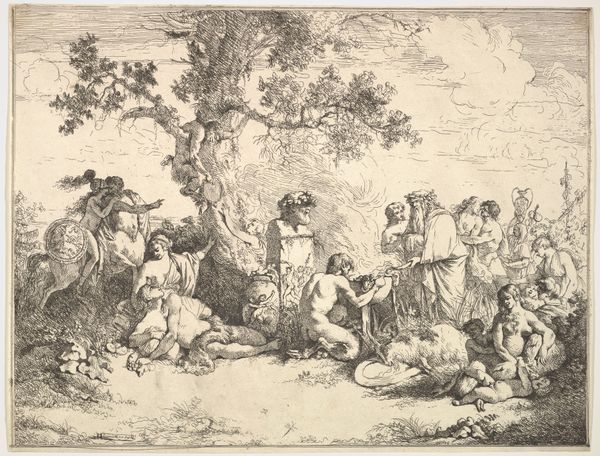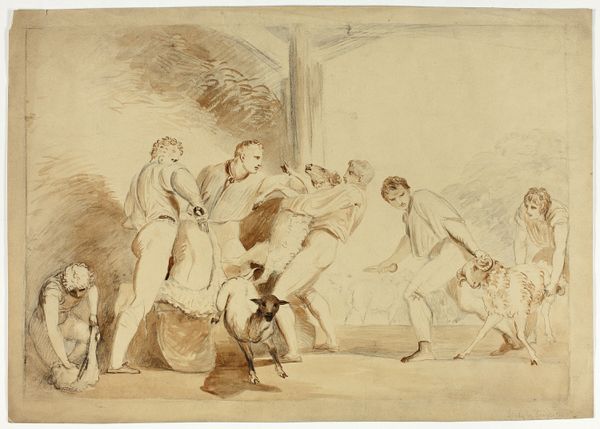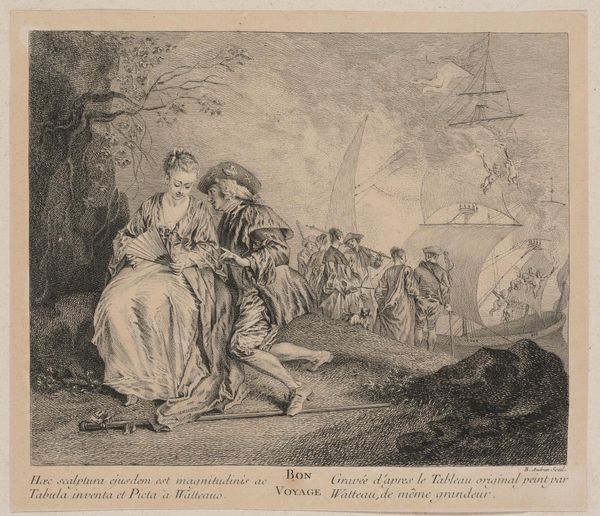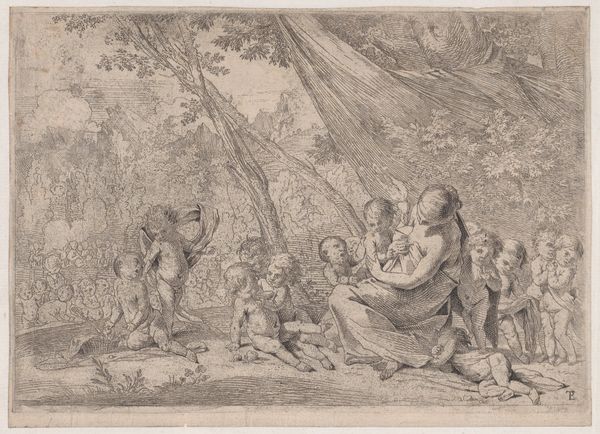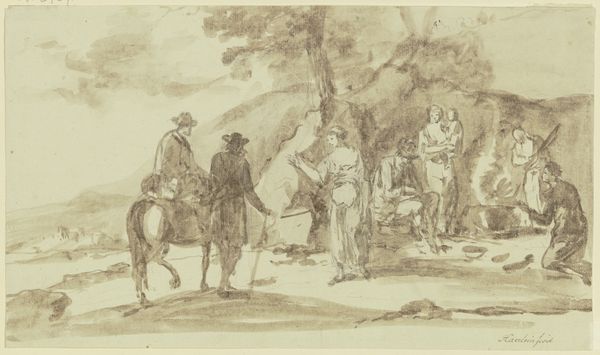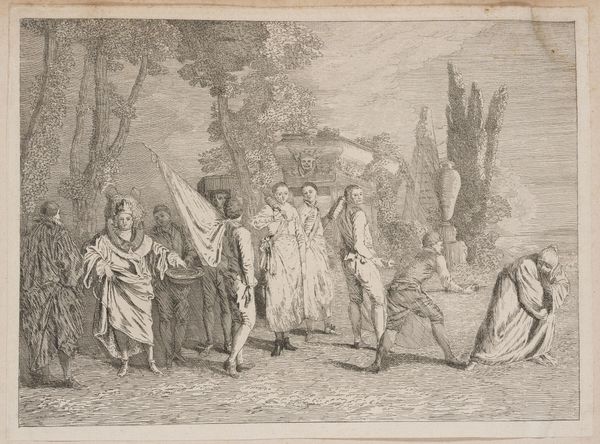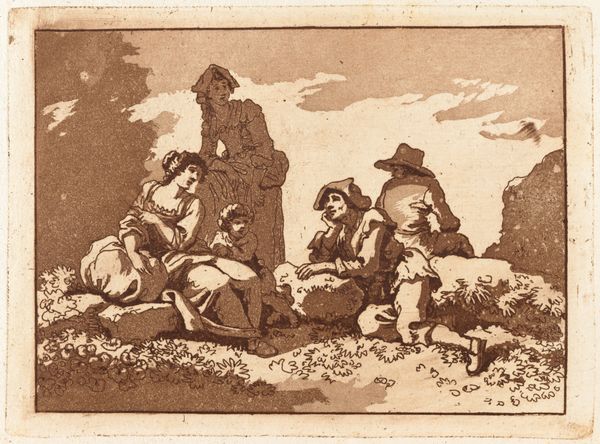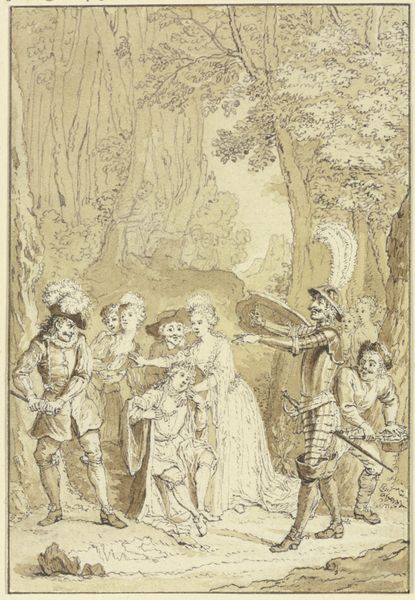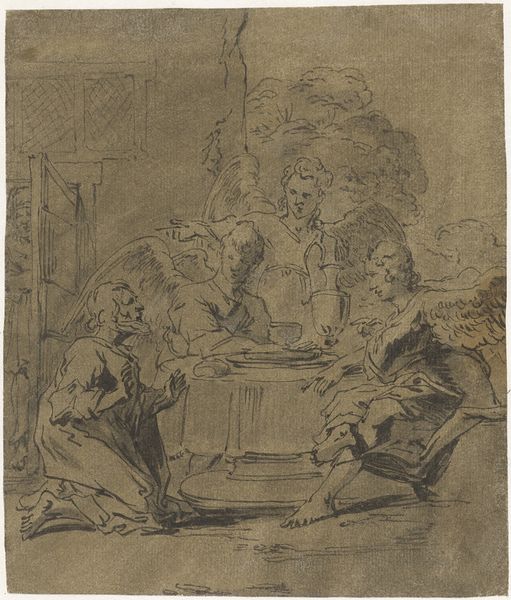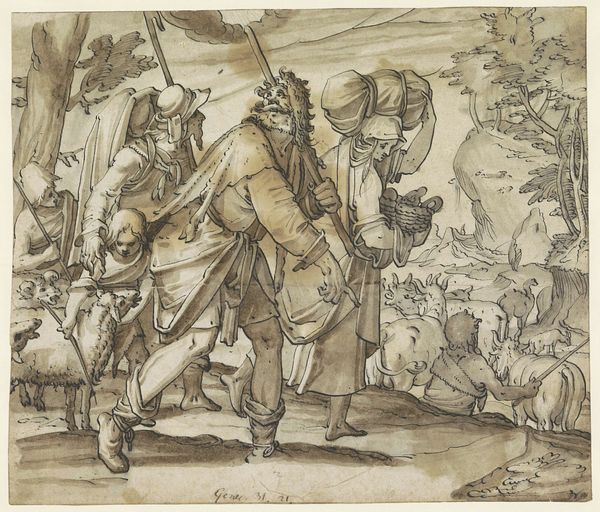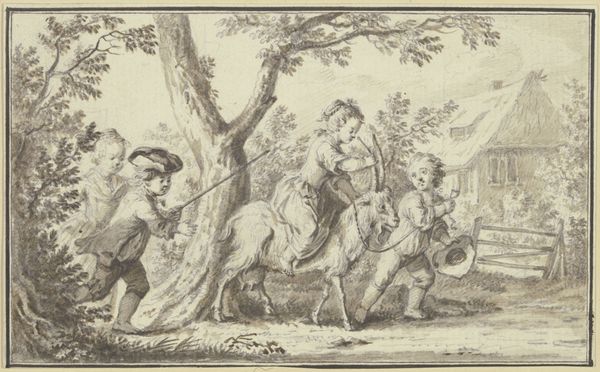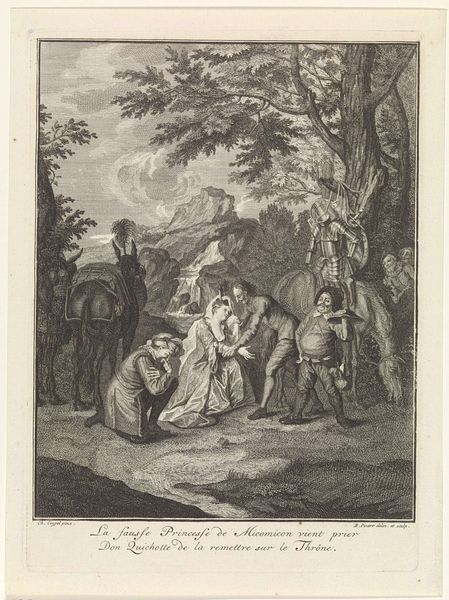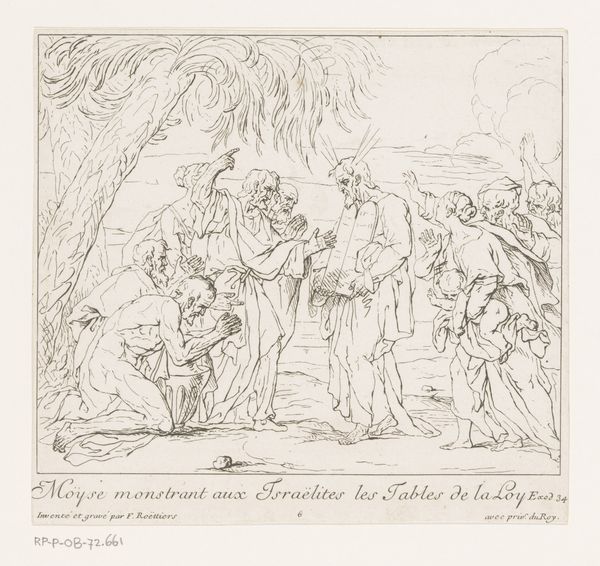
Mirabeau Gives Frederick II of Prussia A Document Outlining the Rights of Man 1789 - 1809
0:00
0:00
drawing, ink
#
portrait
#
drawing
#
ink drawing
#
narrative-art
#
landscape
#
figuration
#
ink
#
romanticism
#
genre-painting
#
history-painting
#
academic-art
Dimensions: 125 mm (height) x 159 mm (width) (bladmaal)
Curator: Nicolai Abildgaard created this ink drawing, "Mirabeau Gives Frederick II of Prussia A Document Outlining the Rights of Man," sometime between 1789 and 1809. The artwork can be found at the SMK, the Statens Museum for Kunst. Editor: It's moody, almost theatrical. The composition, with its asymmetrical balance and dense foliage, certainly heightens the drama. There’s something captivating about its use of shadow. Curator: The artist used ink to create a rather dynamic interplay of light and dark. Note the textural variety. He employs a hatching technique in the clothing but opts for smooth washes in the landscape. What is your reading of this variation? Editor: It immediately suggests different social classes and conditions of production. The clothing of the figures reflects labor, while the "landscape" strokes denote privilege: quick gestures to suggest an idyllic world disconnected from work. This connects directly to the "rights of man", doesn't it? A negotiation between social strata. Curator: An interesting material read! The romantic landscape certainly contrasts the very academic style the figures adopt. We observe Mirabeau extending the document; his face exhibits an air of persuasive intellectualism. Consider this gesture, so loaded with political significance. Editor: Indeed, I can only think about who produced that document, that the 'rights' were for, and under what material circumstances of printing and labor the text became disseminated. I suspect, in contrast to this staged meeting, the true enactment of rights would entail considerably more rough handling. Curator: So, to pull together these thoughts, would you say Abildgaard manages to synthesize history, romanticism and academic styles? Editor: I'm mostly struck by the contrasts and questions embedded in its materiality, production, and what social forces and struggles went into enacting “rights." But seeing it, it sure provides lots to ponder. Curator: It certainly does. Thank you for this stimulating and grounded encounter.
Comments
No comments
Be the first to comment and join the conversation on the ultimate creative platform.
